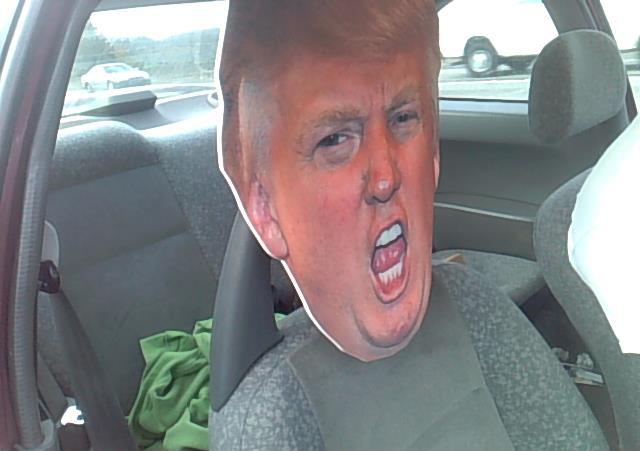
A driver in Seattle, Washington, apparently thought it’d be be a smart move to stick a cutout of Donald Trump’s head in the passenger seat while using a carpool lane on Highway 167 south of Seattle this week.
As if his face wouldn’t attract enough attention, the image on the cutout showed Trump in a characteristic pose – ie. with his mouth open – as if lambasting the driver about his driving skills, or his poor choice of fake passenger, as they sped along the highway. Anyone passing by would’ve definitely looked twice.
Unfortunately for the man behind the wheel, one of those who spotted the unconvincing ruse was a traffic cop, who duly pulled over both him and The Donald.
The driver was immediately slapped with a $136 fine for the violation.
WSP Motorcycle Trooper Greg Ulrich stopped a vehicle this morning NB 167 in Auburn for violating the HOV lane. Do you know why ? pic.twitter.com/N8IQ0jVre3
— Trooper Rick Johnson (@wspd2pio) September 27, 2016
“You see a lot of things in your career, including mannequins, but this was something else,” state trooper Rick Johnson, one of the two officers on the scene, told NBC News.
“Every once in a while, we get somebody trying to be funny,” Johnson said, adding that they allowed the vehicle owner to keep his beloved Trump cutout.
The driver may have wanted to make carpooling great again, but all told, it was a dismal effort that other schemers will surely learn from (no, don’t try using Hillary instead).
The incident took place just hours after Republican presidential hopeful Trump took on Democrat Hillary Clinton in the first of three live televised debates. A record 84 million people tuned in to watch the showdown, with social media platforms like Twitter also reporting some big numbers.


